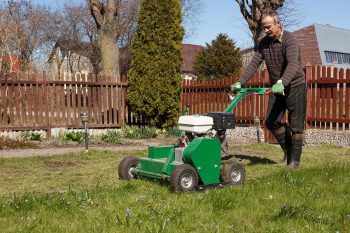 While spring and summer are the seasons of active growth for most Texas plants, fall and winter are a great time to do a bit of maintenance work to keep everything healthy.
While spring and summer are the seasons of active growth for most Texas plants, fall and winter are a great time to do a bit of maintenance work to keep everything healthy.
So what are the most important lawn care chores to attend to during the cooler months?
Mowing and Watering
Neither of these tasks should be stopped abruptly as winter sets in. This is especially true here in North Texas, when our mild winters can still reach seasonal highs of the upper 50’s. Your grass growth will certainly slow down, but it may not go completely dormant for the entire winter.
Slowly reduce the amount of irrigation you provide, as the growth of the blades begins to slow down. If it stops growing altogether and goes a bit yellow, you know it is no longer needing regular watering.
Your mower blades should be adjusted over the span of 2-4 mowing sessions, again as the grass growth slows. Dropping suddenly from 2.5 to 1.5 inches can be a bit shocking to your turf. Furthermore, leaving your winter grass at a length of 1.5 to 2 inches in height provides a bit of insulation against the cold air.
If your region experiences an extended warm spell, your grass bed might perk up a bit and hit a growth spurt. Again, if you decide to break out the lawn mower, just be sure not to cut it too low, or when the ground is wet.
For yards with steep slopes that are tricky to navigate, it’s important to use the right equipment. Check out Best Lawn Mowers For Steep Banks for some great suggestions.
Fertilizing
Applying fertilizer in the final months of autumn can help enrich both your soil and your root system. However, fertilizing too late in the season can be a waste of resources.
If your grass bed is already showing signs of dormancy, the roots are far less likely to soak up the nutrients you provide. This creates a hazardous soil environment, in which microbes and winter weeds may feast on the minerals instead.
Fertilizing in late winter follows the same line of reasoning: don’t waste it! Even in our temperate Texas winters, there is still a risk of one last February freeze. Applying nutrients to your yard for a spring boost is a great idea, so long as you do your best to fertilize after the season’s final frost.
Cleaning and Pruning
There is nothing more damaging to your lawn than a buildup of rotting organic matter, left to decay and suffocate your grass. In both fall and winter, it’s imperative that leaves, twigs, and fallen branches be cleaned up diligently. This is also a great time to rid your trees and shrubs of limbs that are no longer thriving.
In late fall, when the leaves are dropping and you are still mowing the grass, you can simply mulch the leaves with the mower rather than raking them. If more foliage is shed once your lawn has gone dormant, you can rake them into a pile and mow them for mulching material in your garden and flowerbed.
However, freezing temperatures and frequent precipitation are not a good environment for mulch. Algae, mold, and other microbes can thrive in the debris more quickly than the matter breaks down for reabsorption. For this reason, you need to avoid excessive mulching, as well as other buildup, in and around your shrubs and smaller plants.
Once most of your trees have dropped their foliage, you will have a clear view of stems and branches that need to be pruned. Be sure you trim closely to the trunk and/or major limbs, and dispose of the cut branches properly. The cooler weather creates an optimal healing environment, as harmful bugs and diseases are far less likely to feast on the exposed plant tissue.
